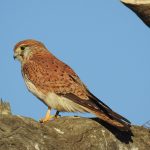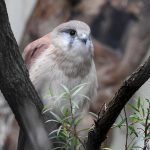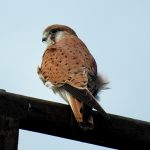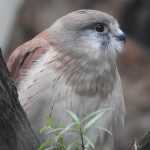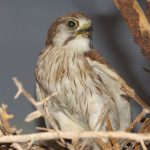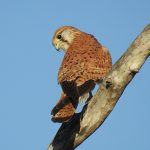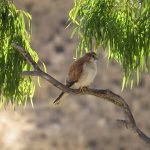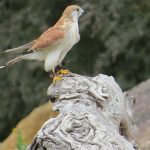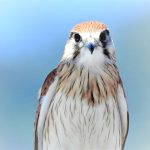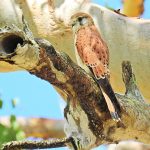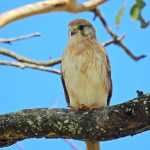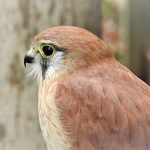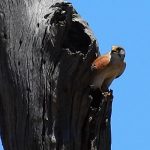NANKEEN KESTREL
The Nankeen Kestrel is a small falcon species found in Australia and parts of New Guinea. It is a familiar and widespread bird of prey known for its distinctive appearance, behavior, and adaptability to a variety of habitats.
The Nankeen Kestrel is a relatively small falcon with a length of about 30-35 cm and a wingspan of approximately 70-80 cm. Its plumage is variable, but it often has a rufous (reddish-brown) coloration on its upperparts and a pale cream to buff color on its underparts. It has a dark eye stripe and a hooked beak.
Nankeen Kestrels are adaptable birds that can be found in a range of habitats, including grasslands, open woodlands, farmlands, coastal areas, and urban environments. They are often seen perched on power lines or hovering in search of prey.
Their diet primarily consists of small vertebrates, such as insects, small mammals, reptiles, and birds. They are skilled hunters and are known for their ability to hover in the air while scanning the ground for potential prey.
Nankeen Kestrels are known for their distinctive hovering behavior, where they hover in place in mid-air while searching for prey below. Once they spot a potential meal, they dive down to catch it. They are agile fliers and can perform acrobatic maneuvers while hunting.
They typically nest in tree hollows, cliffs, or abandoned nests of other birds. The female lays a clutch of eggs, and both parents participate in incubating the eggs and raising the chicks. The chicks fledge after a few weeks and are cared for by the parents until they can hunt on their own.
Like many birds of prey, they may still face local threats due to habitat loss, pesticide use, and other human activities.
The Nankeen Kestrel belongs to the falcon family Falconidae and the genus Falco, which includes other falcon species from around the world.
Nankeen Kestrels play an important role in controlling pest populations and maintaining ecological balance in their respective habitats. They are also valued by farmers for their role in reducing rodent populations. Their ability to thrive in a range of environments makes them a common and recognizable sight for bird enthusiasts and nature observers in Australia.

